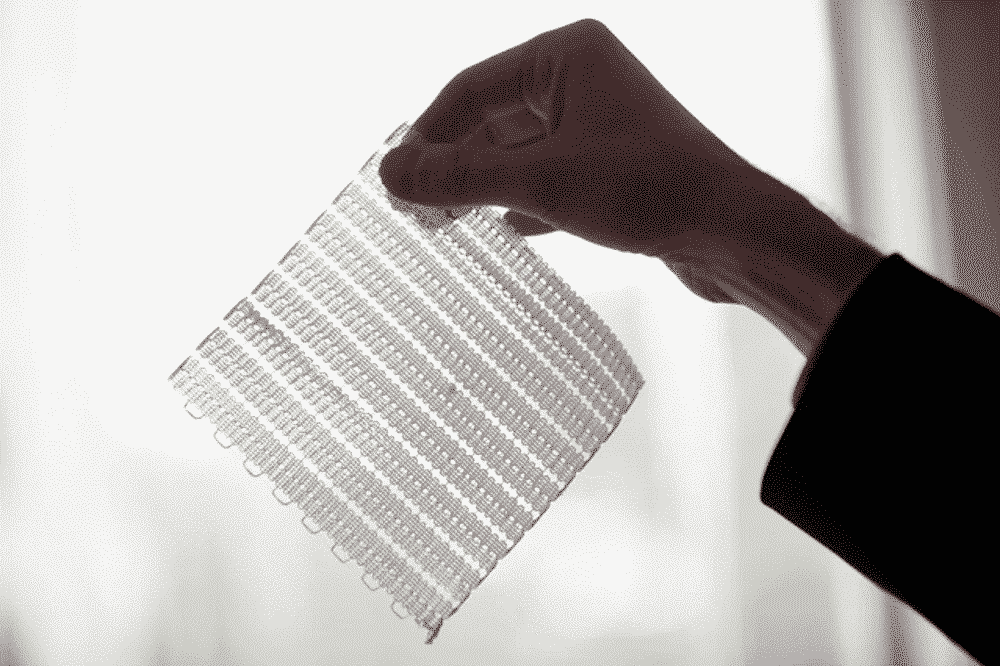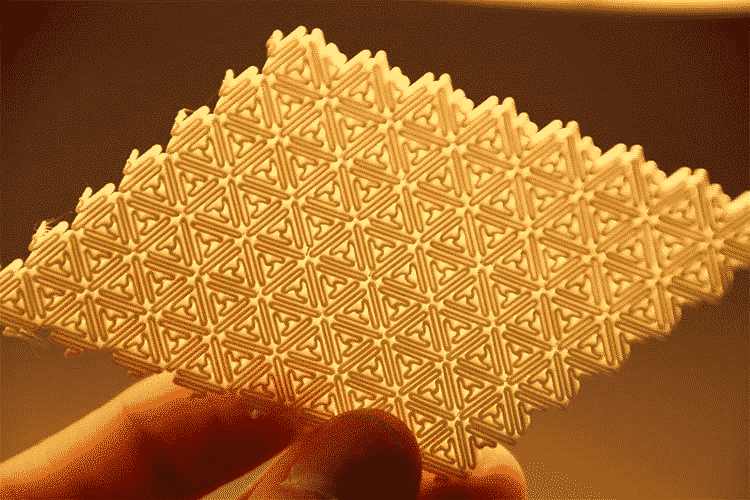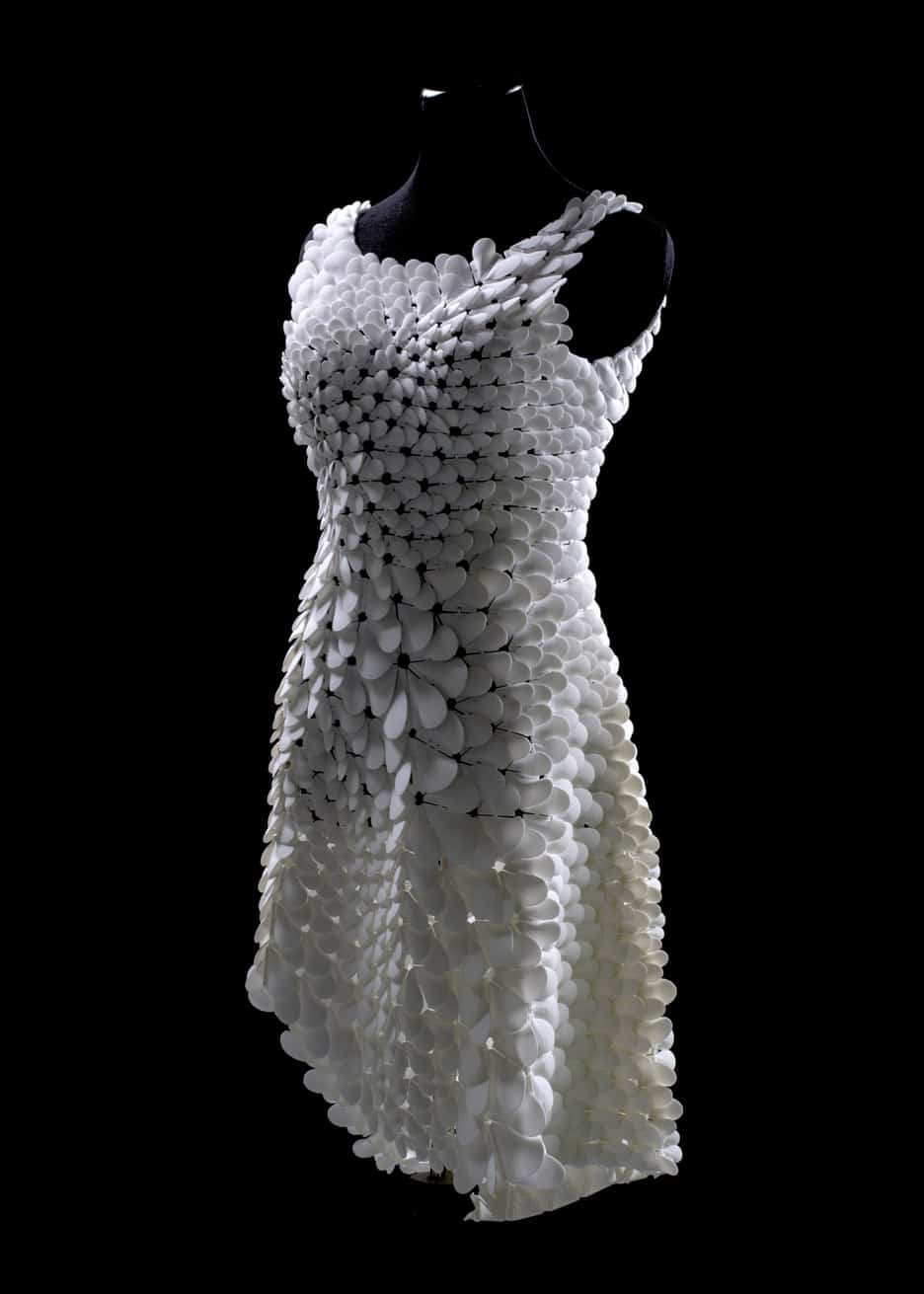3D printing has brought a fresh wave of innovation to runway shows and has great potential as a new mass-customization solution. Today, this technology is advanced enough to easily produce shoe soles and jewelry, but it’s still a relatively challenging process to 3D print a dress or a jacket.
So, when can we see 3D printed clothes appear in the boutique around the street corner? Why it’s not as easy as it looks like? Read on and find the answers. We also look forward to your innovative ideas which may solve these problems in the future.
The difficulty of printing flexible and comfort garments
The high-end fashion and art industry can make full use of 3D printing technology as it allows designers to go beyond the limits of traditional materials and forms by creating all kinds of apparel in a relatively fast and affordable way. But did you ever imagine how it felt when wearing these 3D printed fashions?
One dress designed by threeASFOUR, for example, was composed of white, angular bubbles that made their wearer look like she had emerged from a very foamy bath. But the woman who shepherded it down the runway couldn’t sit down, or the dress would shatter. “The model that was wearing it hated us,” says Bradley Rothenberg, an architect who collaborated on the project with threeASFOUR.
Garments present one of the biggest challenges for designers to overcome, given that they need to be very flexible. For the most part, 3D printing is used for producing non-flexible parts. That’s why 3D printing fashion is a very expensive process still reserved for runway shows.
That’s where clever mesh designs and other innovations come in. Today, most 3D printed garments are typically built using mesh systems, which are individually 3D printed and later assembled to produce a mesh that adapts to the body shape.
Researchers at MIT created a flexible yet strong fabric that is as “soft as skin.”
They modeled their fabric after the protein collagen, which has an intertwined structure that gives it both strength and flexibility. To bring their designs to life, they experimented with many materials but ultimately found that basic TPU provided the best results.
Designer Danit Peleg has adopted filament FilaFlex to print clothes.
It is important that the fabric is flexible, breathable, or porous and should feel comfortable in contact. Commonly available 3D Printer filaments, such as PLA and ABS, do not lend themselves for fabric design. Danit understands that this was a bottleneck and has used a different type of filament called FilaFlex, which is not only flexible but also strong at the same time.
A fabric’s texture is a result of its being a mesh of threads. Fabric could be of either knitted, woven or non-woven, with each of these types having unique features and properties. Danit has used “Mesostructured Cellular Material” designed by ‘Andreasbastian’, to introduce different textures to 3D Printed fabric.
Nervous System uses Kinematics to create a savin-like dress with Nylon petals.
Designers Jessica Rosenkranz and Jesse Louis-Rosenberg, who founded the Massachusetts-based design studio in 2007, revealed a dress made from 1,600 rigid pieces of Nylon fabricated using a technique referred to as 4D printing.
Kinematics is a system for 4D printing that creates complex, foldable forms composed of articulated modules. The system provides a way to turn any three-dimensional shape into a flexible structure using 3D printing. Kinematics combines computational geometry techniques with rigid body physics and customization. Practically, Kinematics allows us to take large objects and compress them down for 3D printing through simulation. It also enables the production of intricately patterned wearables that conform flexibly to the body.
How pricy are the 3D printed clothes?
Perhaps the biggest limitation of 3D printed clothes is the production time needed: A simple garment requires many hours to be printed and assembled, which makes this kind of clothing expensive and excludes many consumers.
For example, the first ready-to-wear 3D printed jacket which is available to purchase on website sold at $1,500. As its designer Danit Peleg introduced, it took more than 100 hours to print and assemble and the edition was limited to 100 pieces. Every piece is unique, made to measure with your own customizations and its production process produces zero waste. The jacket is printed with a flexible, rubber-like material and has a silky fabric lining that makes it super comfortable to wear.
The main challenge with flexible is that you have to print very slow, which is a reasonable explanation for the high cost of 3D printed garment. We generally print at a slow 15mm/s because of this it’s hard to do complex prints with overhangs and cantilevers. Sold at 599€ ($815), the Lewihe 3D Printer is the fastest known printer of FilaFlex, flexible filament on the market, printing at a staggering 150 mm/s.



